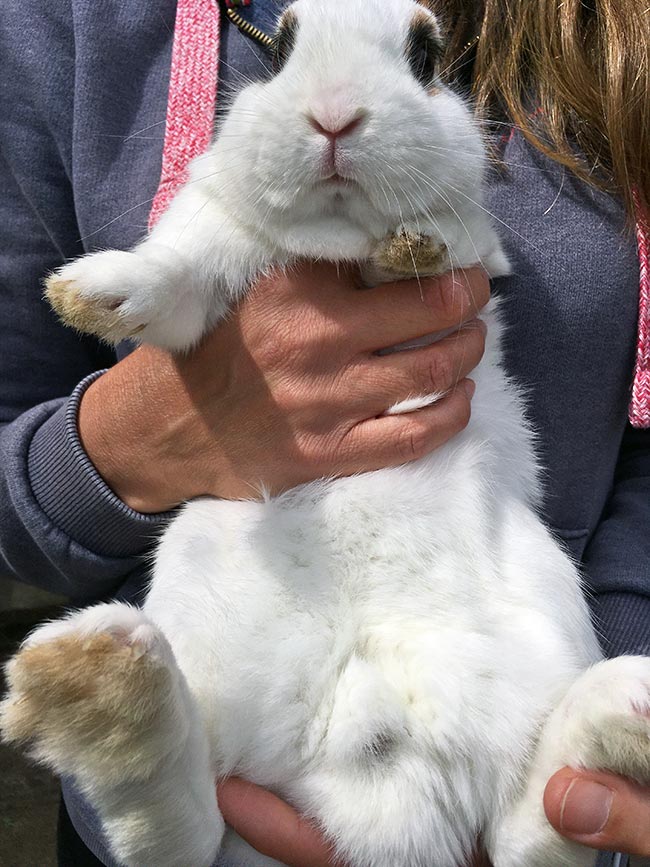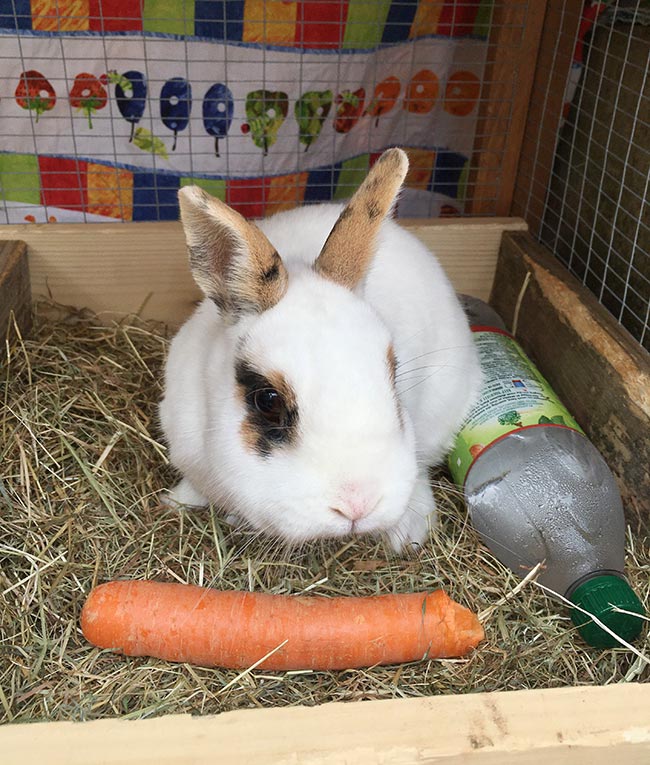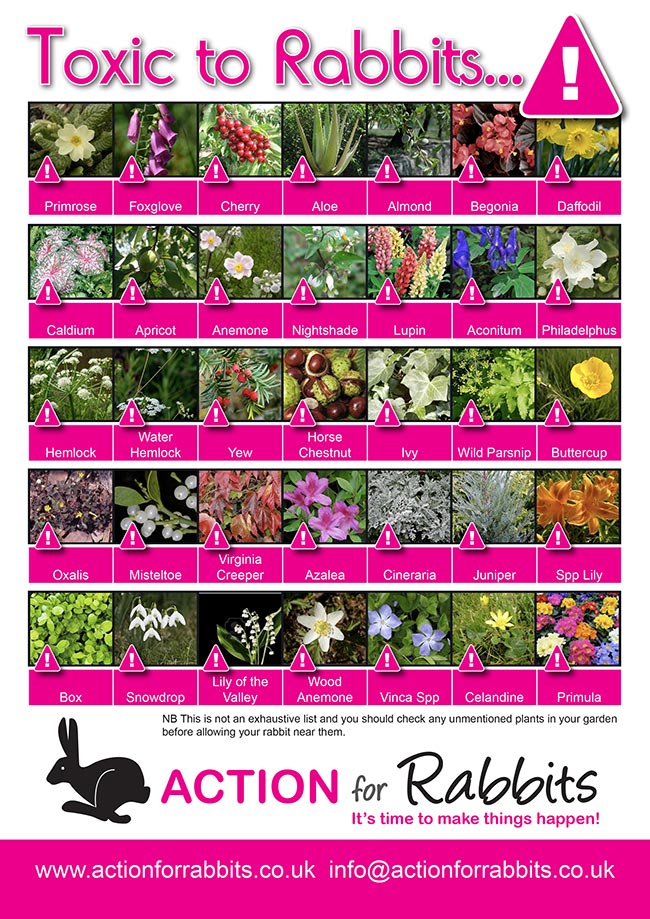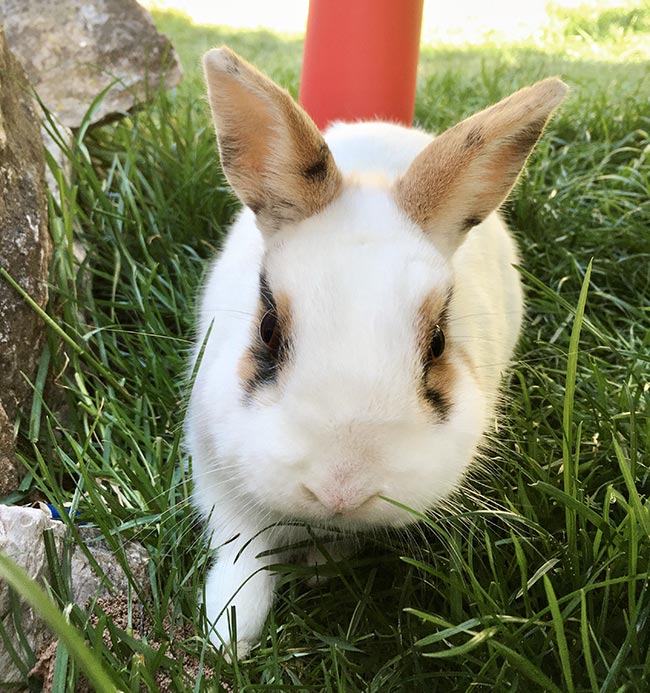7 May 2021

A rabbit looking relaxed and happy in natural shade during warmer weather.

Warmer weather can increase risk of illness and disease in rabbits – and knowing how best to advise owners during this time is imperative as a preventive health care measure.
Well-advised rabbit owners will hopefully make for healthier, happier rabbits, and reduced admittances related to preventable diseases during the summer months.
Health checks are so important for all our patients – and no less for rabbits. Making sure rabbits are in the best of health all year round is always going to be the best way to keep them free from disease and illness through the tougher parts of the year – the hottest summer months.
A thorough health check should be carried out by a vet at least once or twice-yearly. It is likely that many owners will only bring their rabbits in once a year for their vaccinations, so a thorough examination at that time is so important.
Taking a full history – including husbandry and diet, whether the rabbit lives indoors or outside, alone or with a companion – is important information we can keep in mind when carrying out an examination. For example, any concerns raised regarding diet or husbandry could indicate a predisposition to dental disease or higher risk of fly strike.
On examination, pulse and respiration should be attempted first, while the rabbit is most settled, and a temperature later if necessary (Table 1). Rabbits can suffer rectal tears, so care must be taken when obtaining a temperature.
| Table 1. Normal temperature, pulse and respiration values | ||
|---|---|---|
| Temperature | Pulse | Respiration |
| 38.5°C to 40°C | 180bpm to 300bpm | 30 to 60 breaths per minute (when not handled) |
A nose-to-tail examination should be performed, making sure to check ears, eyes and nares for inflammation and discharge. Incisors should be checked for signs of trauma, overgrowth or malocclusion, and cheek teeth should be checked with an otoscope for signs of uneven wear and subsequent spurs. If dental disease is present, there may be signs of drooling and a history of decreased appetite and weight loss. Palpation of the jaw should feel smooth, and not bumpy and uneven; this could indicate dental disease.
The coat must be checked for signs of scaling skin and parasites, and the condition of the coat itself noted. An unkempt appearance could, again, point to dental disease or other concerns, such as arthritis, which may make grooming difficult for the rabbit.
The chest should be auscultated for abnormal sounds. Abdominal palpation and auscultation of gut sounds should be routinely performed – no gut sounds or very loud gut sounds can both point towards poor gut motility or gut stasis.
Finally, check the perianal and genital area for signs of inflamed skin, faeces and urine scalding, and that the plantar aspects of the rabbit’s feet are clean and free from signs of sore hocks (pododermatitis).
During these routine appointments, owners can be advised on how to handle their rabbits to perform health checks (Table 2) throughout the rest of the year and to contact the clinic if worried or concerned.
| Table 2. Rabbit health check for owners | |
|---|---|
| Area | What to look for |
| Daily | |
| Eyes | Clean, clear, free from redness and crusting. |
| Nose | Clean, clear, no crusting. |
| Coat | Clean, free from mats, check for fly eggs. |
| Mobility | Able to move around as normal, can easily get in and out of the hutch. Particularly important with regards to older rabbits. |
| Behaviour | Active; moving around hutch, run, house; interactive if usual for personality of individual. |
| Normal appetite | Eating normal amount of food and all usual foods; no avoidance. |
| Normal faeces and urine output | Normal formed faeces and normal size; no sign of uneaten caecotrophs. Normal amount and colour of urine, and urinating in usual places. Avoiding litter trays could be a sign of urine infection or poor mobility. |
| Examine the perineal and genital area twice-daily in summer | Check for faeces, urine scalding and signs of maggots or fly eggs. |
| Weekly | |
| Groom | Groom to remove any mats/knots. Long-haired breeds may need grooming as much as daily to prevent matting of fur. |
| Incisors | Check length and alignment, and check for signs of drooling or staining around the mouth, which could indicate dental issues. |
| Weight | Weigh and record the weight once-weekly. Regular weighing will allow any problems to be picked up early, especially as it may be difficult to tell which rabbit is eating in a pair – keeping regular weights should highlight potential concerns very quickly. |
The RSPCA advises owners to carry out the following checks and has produced a video guide:
The Rabbit Welfare Association and Fund (RWAF) is another great resource for owners with regards to rabbit care, health and welfare.

Vaccinations should be given when they are due all year round, but the summer months can propose greater risk of spread from vectors.
Rabbits can be vaccinated against three main diseases – myxomatosis, and rabbit viral haemorrhagic disease strain 1 (RVHD1) and strain 2 (RVHD2).
Myxomatosis is spread by direct contact, but also by mosquitoes and fleas. RVHD can also be spread via arthropod vectors – such as lice, fleas, ticks and mites – by biting the host and transmitting the disease directly into their bloodstream. This emphasises why the vaccination of indoor rabbits is also so important, despite the popular myth that they can only be transmitted via rabbit to rabbit.
Vaccines can be given from 5 weeks of age, and boosters for myxomatosis and RVHD should be given every 12 months. RVHD2 requires a separate vaccine that can be given from 10 weeks, then needs to be given every 12 months. A new vaccine (Nobivac Myxo-RHD Plus) is now available that can be given annually and covers all three diseases. This can be given from 5 weeks of age, with immunity lasting for a year when a repeat booster vaccination will be required (Table 3).
| Table 3. Vaccinations (adapted from NOAH Compendium) | |||
|---|---|---|---|
| Brand | Age first dose can be given | Onset of immunity | Repeat dose |
| Eravac (RVHD2) | 30 days | 7 days | Every 12 months |
| Filavac VHD K C+V (RVHD1, RVHD2) | 10 weeks | 7 days | Every 12 months |
| Nobivac Myxo-RHD (myxomatosis, RVHD1) | 5 weeks | 3 weeks | Every 12 months |
| Nobivac Myxo-RHD Plus (myxomatosis, RVHD1, RVHD2) | 5 weeks | 3 weeks | Every 12 months |
Myiasis – also known as fly strike – is a skin infection caused by flies laying their eggs on rabbit-soiled fur. As the maggots grow, they eat their way into the rabbits’ flesh and release toxins that can cause seizures and shock.
The flies will be attracted by the smell of urine and faeces – and if the rabbit is debilitated and unable to groom away urine and faeces on its coat, the risk of fly strike will be higher.
This condition is much more likely to affect rabbits where the owners practise poor husbandry, such as insufficient cleaning of the hutch and the run area, and where the rabbits themselves are somewhat debilitated.
Predisposing factors to myiasis include:
This is why, during the health checks at the clinic, it is important to make sure good husbandry is being applied and that the rabbits are overall in good health. Practitioners must also make sure rabbit owners are confident enough to handle and check their rabbits regularly at home, and encourage them to attend clinics more frequently if they are not.
One study on the morbidity and mortality of domestic rabbits found that more than 10% of the recorded rabbit deaths were caused by fly strike. Other common causes included Encephalitozoon cuniculi infection, myxomatosis and bite injuries – all potentially preventable conditions with optimal rabbit husbandry, regular health checks and vaccinations, and better owner understanding of how to prevent these diseases.
It is important to let owners know that if the rabbit suffers from fly strike it would likely need admittance for intensive care – sedation or anaesthesia to remove the maggots, supportive fluid therapy, analgesia and antibiotics, assisted feeding and treatment of the wounds, all at varying expense to the owner depending on the severity of the case. Given the full picture, hopefully owners will see prevention certainly is better than the cure.
The best prevention is to educate owners to provide a high standard of husbandry and diet, and to carry out regular checks on their rabbits.
Daily spot cleaning of the hutch should be carried out as usual and a full clean-out – ideally twice weekly – as flies will be attracted to any soiled areas. Regular cleaning will also help prevent rabbits from sitting in urine and faeces, which will make them more susceptible to fly strike.
Owners should be checking their rabbits’ genital and perineal areas at least twice-daily during the summer months, and should contact their clinic immediately should they have any worries or concerns regarding possible fly strike or any of the predisposing complaints. Fine flyproof mesh can also be used to cover the run and any openings to the hutch.
At the clinic, it would be a good protocol to have a rabbit health care plan specifically for fly strike and running with a seasonal supply of insect repellents such as Novartis Rearguard or F10 Germicidal Wound Spray with Insecticide. Rearguard can be used in rabbits from 10 weeks of age and will prevent fly eggs from hatching, but will not kill maggots or repel flies. F10 Germicidal Wound Spray with Insecticide can be used as a fly strike prevention (and to prevent the spread of myxomatosis) by applying to the rear end of the rabbit or any other area of concern. Where the risk of fly strike is high – for example, healing wounds – daily application may be needed. F10 can also be used as a surface spray inside the hutch to help deter flies from entering. F10 will deter flies, fleas and other biting insects.
During the warmer weather, wild rabbits would spend a lot of time below ground where the temperatures remain constant at around 15°C to 20°C. Similarly, pet rabbits need to be provided with a cool area – both indoors and outdoors – to prevent overheating.
It is important to avoid not only hutches and exercise runs being placed in the sun with no shade, but also travelling in hot cars – otherwise the risk of heatstroke will be dramatically increased.
Rabbits can overheat quiet easily as they do not have sweat glands. However, they have other ways of regulating their body temperature. Rabbit noses contain large amounts of small blood vessels that help to cool them as they breathe. This cooling system works less well in dwarf breeds, which are more brachycephalic, than in larger breeds. Rabbits will also hyperventilate to keep cool as this helps to humidify the air in the lungs and lower the body temperature.
Rabbit ear pinnae also contain many blood vessels to cool the blood through vasodilatation. However, this does not work so well in lop-eared and dwarf rabbits, so it may be prudent to discuss increased risk of heatstroke with the owners of these breeds.
It is advisable to explain to owners how rabbits regulate their temperature, and that dwarf and lop-breeds struggle more when compared to straight-eared, non-dwarf breeds. This knowledge will hopefully give owners a better understanding of why it is so important to take preventive measures to avoid heatstroke in their rabbits during the summer months.
Owners also need to be made aware of the common signs of heatstroke so they can act quickly should they suspect this life-threatening condition.
Signs of heatstroke owners need to be aware of are:
Refusing food can also be a sign of heatstroke; however, a lack of appetite can be caused by many reasons other than heatstroke.
If an owner contacts the practice with concerns regarding heatstroke, they can be advised to help cool the rabbit by dampening the fur and ears with cool water while travelling to the clinic for an emergency appointment. It may be worth advising owners not to submerge their rabbit in cold water as this may be fatal.
At the clinic, a diagnosis of heatstroke can be made by the history, clinical signs and body temperature higher than 40°C. Once the rabbit is admitted, treatment consists of gradual cooling down to reduce the hyperthermia, supportive fluid therapy, and monitoring of demeanour, appetite, and faecal and urine output. Urinalysis and blood testing are advised to assess renal function.
Owners can take many steps towards preparing their rabbits for the hot summer days and preventing heatstroke:


During the summer months, rabbits will more than likely have extended time outside in a run area – or free range in an enclosed garden – and they may be more in contact with poisonous plants.
Owners should be aware of the most common poisonous plants (Table 4), but others exist that can be toxic if ingested.
| Table 4. Plants poisonous for rabbits | |||||
|---|---|---|---|---|---|
| Acornite | Daffodil | Hellebore | Lily of the valley | Privet | Tree lupin |
| Bluebell | Deadly nightshade | Hemlock | Monk’s hood | Ragwort | Tulip |
| Buttercup | Dock | Holly | Periwinkle | Rhubarb | Wild garlic |
| Cowslip | Foxglove | Hyacinth | Poppy | Snowdrop | Woody nightshade |
| Crocus | Grape hyacinth | Ivy | Primrose | Traveller’s joy | Yew |
Some of the most reported cases are due to ivy, foxgloves, and rhubarb (see poster below). Ivy can be an irritant if eaten, with possible signs including loss of appetite, lethargy and diarrhoea leading to gut stasis if not treated. Paralysis, seizures and collapse leading to death have also been reported. Rhubarb poisoning is similar, but can also cause extreme dehydration. Death can occur, but is rare. Foxglove poisoning can include abdominal pain, dehydration, irregular heart rhythm and uncommonly seizures.
Due to rabbits’ anatomy and the inability to vomit, poisons can stay in the digestive system for longer periods – causing further damage to organs. Even with veterinary treatment, some rabbits may not survive.

Owners should seek veterinary advice immediately if they are concerned their rabbit could have ingested anything. This includes not only plants, but chemicals such as pesticides and weed killers, or poisons used to terminate rodents. Moreover, mycotoxins that are commonly associated with fungi and mould can be poisonous, so any uneaten bird food should be removed from the rabbit’s reach. Pelleted food and hay should also be kept somewhere dry to prevent the formation of mould.
The Veterinary Poisons Information Service is a 24-hour dedicated emergency line that can provide information to veterinary staff about the treatment of animals exposed to toxic substances.
Common signs of ingestion of poisons plants and other toxins may include:
This is only an example of what may be presented, as different poisons can affect the body systems differently.
Initial investigations may include blood testing and urinalysis to determine damage to organs. Treatments may consist of cleaning and flushing the mouth to remove the irritating substance, IV fluid therapy for shock and dehydration, getting the patient back to optimum temperature if hypothermia or hyperthermia are present, assisted feeding to promote gut motility, and administering activated charcoal orally to bind the toxins in the digestive tract and prevent them from causing damage to the liver.
Rabbits can deteriorate rapidly, so it is important to get a good detailed clinical history from the client to treat the patient as quickly and effectively as possible.
To prevent rabbits being exposed to poisonous substances, a vigilant exploration of the garden or run area must be carried out before the rabbits are left alone. If any suspicious plants or weeds are present, it is advised to dig them up and get identification in case they grow again for future reference.
Larger plants, or ones owners would like to keep, can be fenced off away from the rabbits to prevent ingestion.
Pesticides and other chemicals should be kept away and under lock, and food stored in a dry and clean area.

Seasonal rabbit clinics can provide a good opportunity to discuss and examine rabbits between their annual vaccination checks. However, by promoting education and rabbit health, practitioners can provide good preventive care for rabbits during the summer months.
Rabbit education can create a great client bonding with the practice, with owners knowing knowledgeable rabbit vets and nurses are able to give them advice.
This information can also be used on social media and client handouts, either in digital or leaflet form.